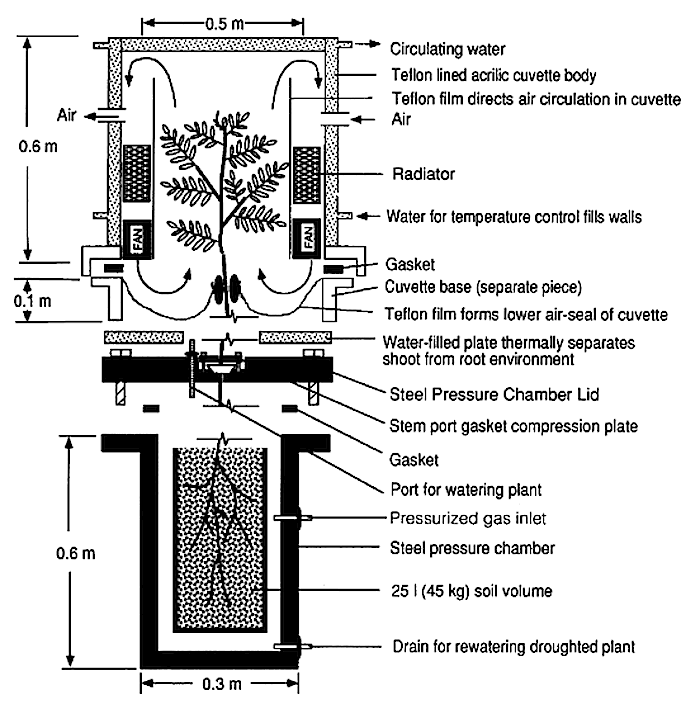=============
叶片水势在控制气孔导度(gs)中的作用
O papel do potencial hídrico das folhas no controle da condutância estomática (gs).
El papel del potencial hídrico de las hojas en el control de la conductancia estomática (gs).
=============
Control of stomatal conductance by leaf water potential in Hymenoclea salsola (T. & G.), a desert subshrub
Comstock J., Mencuccini M. (1998)
Plant Cell Environ. 21(10): 1029–1038 –
https://doi.org/10.1046/j.1365-3040.1998.00353.x –
https://onlinelibrary.wiley.com/doi/10.1046/j.1365-3040.1998.00353.x
Abstract
The role of leaf water potential in controlling stomatal conductance (gs) was examined in the desert subshrub Hymenoclea salsola. For plants operating at high irradiance, stomatal closure in response to high leaf-air humidity gradient (D) was largely reversed by soil pressurization. Stomatal re-opening eliminated, on average, 89% of the closure normally induced by high D. Transpiration rates (E) reached under these conditions were far higher than maximal rates normally observed at any point of the D response. In situ stem psychrometry indicated that water flux at all times conformed to a simple Ohm’s-law analogy. Under conditions of high D, E increased substantially in response to soil pressurization. Stomatal regulation did not constrain E during this treatment, but did result in nearly constant minimum leaf water potentials.


You must be logged in to post a comment.